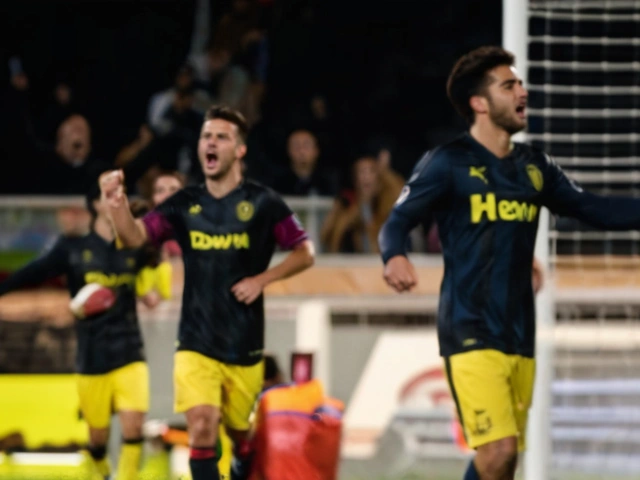Understanding the Shift in US Policy
The decision by the United States to shift its policy regarding Ukraine's use of long-range missiles signifies a marked change in global dynamics. Initially, the US was reluctant to allow Ukraine access to weapons capable of striking deep into Russian territory. The fear was straightforward: the potential for escalation was immense, spiraling towards a situation where nuclear weapons could come into play, a frightening prospect given Russia's military strength. However, the tides have turned, with multiple unforeseen developments on the global stage prompting a rethink in strategy.
For starters, Russia's unyielding aggression has been relentless. Despite numerous sanctions and diplomatic efforts, Russia persists in its military advancements, undeterred and more forceful, cornering Ukraine into a defensive posture. Such audacity requires a counterbalance, something only achievable with modern warfare's high-caliber precision weaponry. The introduction of ATACMS ballistic missiles into Ukraine’s arsenal symbolizes this necessity.
The ATACMS Advantage
ATACMS, or Army Tactical Missile Systems, are indeed a game-changer for Ukraine. With a striking range of up to 300 kilometers, these missiles offer a strategic advantage by allowing Ukraine to hit Russian military installations and logistic setups significantly beyond their previous reach. The decision to supply these weapons reflects not only a bolstering of Ukraine's immediate defense capabilities but also a potential shift in the ongoing chess game between Western nations and Russia.
Military strategists argue that by having the ability to strike key logistical and military hubs inside Russian territory, Ukraine can make Russian advancements less tenable. It creates a deterrent effect, forcing a recalibration of Moscow’s military calculus. Beyond Russia's borders, this move underscores a deeper involvement of Western allies in the conflict, illustrating an unfurling geopolitical strategy to present a unified front against what many see as autocratic aggression.
International Community and Growing Support
The role of the international community in this evolving scenario cannot be understated. Across the globe, support for Ukraine is manifesting in various forms. Nations traditionally seen as neutral are taking stands, diplomatically condemning Russia's actions while extending support to Ukraine. With voices from across Europe, including UK Prime Minister Keir Starmer's spokesperson, criticizing Russian policies, the echo against Moscow's aggression is growing. The collective stand invigorates Ukraine's resolve, encouraging resistance and the global push for a peaceful adjustment.
Implications of Putin's Nuclear Doctrine
Adding to the complexities is Russia's recent adjustment in its nuclear doctrine. Approved by President Vladimir Putin, the new strategy seemingly lowers the threshold for nuclear weapon usage. Despite the international outcry and the moral reprehension expressed by leaders like Starmer, this move represents a calculated threat, leveraging nuclear intimidation to deter Western intervention. However, this might have inadvertently pushed the US and its allies into reconsidering their arms support to Ukraine, evaluating the importance of a more muscular defense posture.
Debates among defense analysts continue as they parse through the multiple facets and potential consequences of this escalated armament support. Figures like Deborah Haynes closely watch these developments, articulating concerns and developing insights into the possible future ramifications, including the risk of skyrocketing tensions.
The Impact and Future of the Conflict
With Ukraine now equipped to hit targets previously deemed unreachable, the war enters a new phase. The effect this will have on the conflict's trajectory remains to be seen. Yet, the implications are profound. Military experts speculate that Russia's response could swing between intensified military action and potentially diplomatic negotiations, spurred by strategic pressures.
Meanwhile, as discussions linger about global stability, eyes focus on key figures like Ukrainian President Volodymyr Zelenskyy and President Putin. Their actions and diplomatic maneuvers will inevitably shape the future landscape of this conflict. The augmented involvement of Western forces in Ukraine not only signals center-stage support but also marks a defining moment in global politics, where standing against aggressive expansion has drawn unprecedented collaborative defense measures.
Conclusion: A Realm of Uncertainty
The shift in the US stance is not merely a tactical response but also a statement of ideological resolve. The commitment to Ukraine in this manner tells the world where lines are drawn and engages more broadly in a dialogue about the kind of global order we are striving towards. The decision to green-light ATACMS' deployment is layered with potential, threading into the fabric of global diplomacy, even as risks loom large. As this new chapter unfolds, all eyes remain fixed on how this will shape the balance of power, diplomacy, and the enduring human cost of war.





